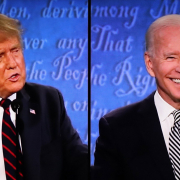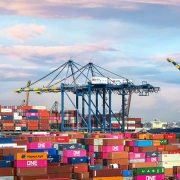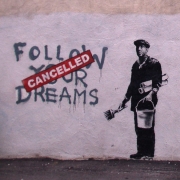The Working Classes Are a Volcano Waiting to Erupt
Whatever the final outcome, the recent French elections have already revealed the comparative irrelevance of many elite concerns, from gender fluidity and racial injustice to the ever-present ‘climate catastrophe’. Instead, most voters in France and elsewhere are more concerned about soaring energy, food and housing costs. Many suspect that the cognitive elites, epitomised by President Emmanuel Macron, lack even the ambition to improve their living conditions.
The French elections reflect the essential political conflict of our time. On one side, there is a powerful alliance between the corporate oligarchy and the regulatory clerisy. On the other, there are two beleaguered and angry classes – the small-business owners and artisans, and the vast, largely unorganised service class. The small-business class generally tends to favour the populist right, whether in America, Australia or Europe. These people want the government out of their business and to be left alone. Meanwhile, workers tend towards the populist left, which promises to relieve their economic pain.
The common feature is the politics of anger and resentment. In the first round of the French elections, a majority voted either for Marine Le Pen and other rightist candidates, or for the old Trotskyist warhorse Jean-Luc Mélenchon and other candidates of the hard left. The establishment parties, like the centre-left Parti Socialiste and the Gaullist Républicains, were left way behind. The ultra-green Parti Socialiste mayor of Paris, Anne Hidalgo, won less than two per cent – a pathetic performance from the onetime ruling party. Intriguingly, voters under 35 went first for Mélenchon and then Le Pen, leaving the technocrat Macron in dismal third place among the young. Macron only won decisively among voters over 60.
We may, as de Tocqueville put it during the early stages of the Industrial Revolution, be ‘sleeping on a volcano’. A still inchoate rebellion from below against the concentration of wealth and power above seems to be gathering momentum. Across the 36 wealthier countries of the Organisation for Economic Cooperation and Development (OECD), the richest citizens have taken an ever-greater share of national GDP in recent years as the middle class has become smaller. Heavily in debt, mainly because of high housing costs, the middle class ‘looks increasingly like a boat in rocky waters’, suggests the OECD.
One key indicator of the declining middle class is rates of home ownership, which are stagnant or plummeting, particularly among the young, in the United States, the United Kingdom and Australia. In the United States, the chance of middle-class earners moving up to the top rungs of the earnings ladder has dropped by approximately 20 per cent since the early 1980s. Life expectancy in the US has dropped to the lowest levels in a quarter of a century.
This growing class division is a global phenomenon. In 1974, the proportion of global corporate income that went to labour was about 64 per cent. It dropped to 59 per cent by 2012. This pattern has applied not only to wealthy markets in the West, but also to labour-rich markets like China, India and Mexico. In 2017, the Pew Research Center found that poll respondents in France, Britain, Spain, Italy and Germany are even more pessimistic about the next generation than those in the United States. Such sentiments are shared in countries like Japan and India, where many new college graduates fail to find decent employment. Well over two thirds of Mumbai youths are pessimistic about their prospects.
This erosion of opportunity sets the stage for a potential combustion of class anger, particularly as the pandemic and now Russia’s invasion threaten to make things worse. The unemployment rate reached 32.5 per cent in South Africa during the pandemic years, with almost two thirds of young people with no job in sight. The story is unfortunately similar elsewhere in Africa, with regional powers such as Kenya and Senegal reporting over 40 per cent unemployment. This is a recipe for chaos. Several Latin American, African and Middle Eastern countries have also defaulted on long-term loans and more may follow.
Even China seems poised for an outbreak of class warfare. Since 1978, China’s Gini coefficient, a key measurement of income inequality, has tripled. China has gone from being highly egalitarian to becoming more stratified than Mexico, Brazil or Kenya, as well as the United States and virtually all of Europe. China, notes one observer, is now developing ‘something resembling a permanent caste system’.
Read the rest of this piece at Spiked.
Joel Kotkin is the author of The Coming of Neo-Feudalism: A Warning to the Global Middle Class. He is the Roger Hobbs Presidential Fellow in Urban Futures at Chapman University and Executive Director for Urban Reform Institute. Learn more at joelkotkin.com and follow him on Twitter @joelkotkin.
Photo: Olivier Ortelpa via Flickr under CC 2.0 License.



 Barrett Ward, CC 0.0 License
Barrett Ward, CC 0.0 License
 Chris Devers, used under CC 2.0 License
Chris Devers, used under CC 2.0 License


